#Graphocephala coccinea
Explore tagged Tumblr posts
Text
I love how vibrant these bugs are
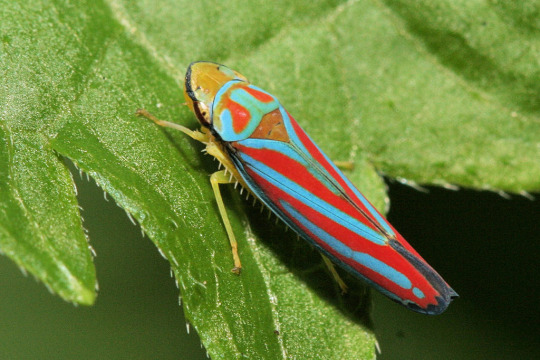
(Source: iNaturalist)
22 notes
·
View notes
Text
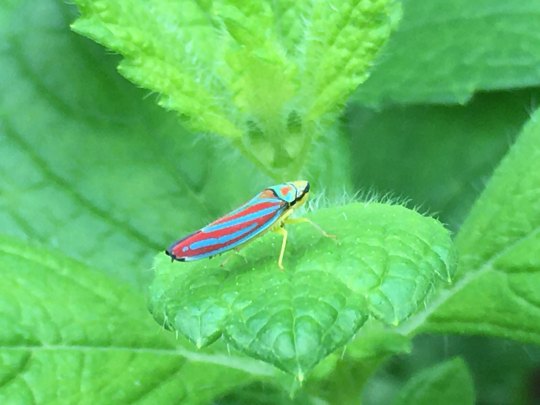
red-banded leafhopper, Graphocephala coccinea
18 notes
·
View notes
Text
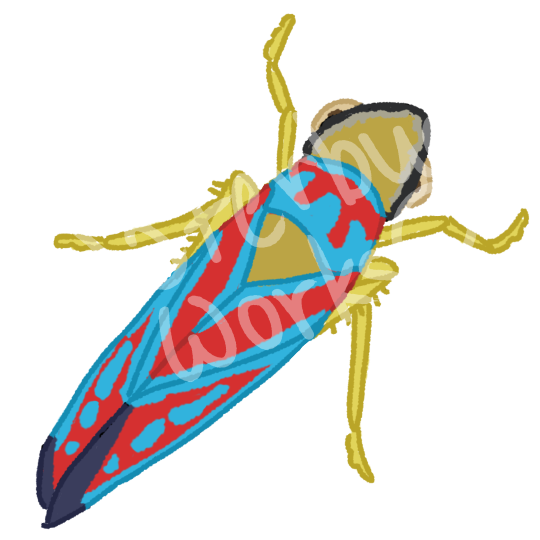
The Candy-striped Leafhopper (Graphocephala coccinea)! This arthropod friend hails from North and Central America, all the way from Canada down to Panama.
4 notes
·
View notes
Text
I see at least one cool bug a day, and usually many more, but it’s not because I live anywhere particularly rich in strange, wonderful creatures (I live in an unremarkable corner of Pennsylvania, USA) or spend all of my free time looking for bugs (well, just *most* of it). in my experience, finding interesting bugs is less about actually locating them and more about looking closely at tiny things you’d otherwise ignore!
this very long post was compiled over a couple days in late July, although I spent less than 10 minutes at a time searching. there’s a lot of fun creatures just out in the open.
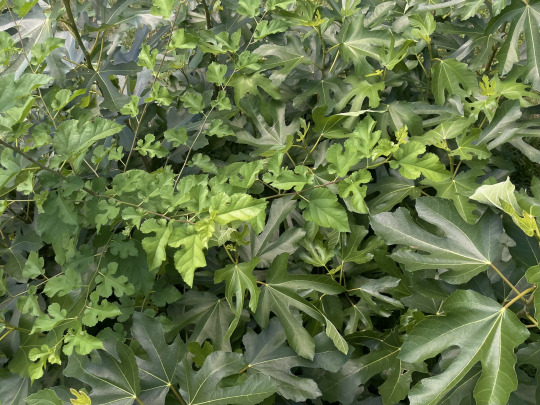
plants are always a good place to start when looking for bugs, and I chose this small fig tree (Ficus carica) with a mulberry sapling friend. feeding on the sap of the fig and mulberry is the first group I’ll take a look at, the planthoppers:

these two are flatid bugs, Metcalfa pruinosa and Flatormenis proxima. flatids are slow-moving bugs that can be approached closely, but once they get tired of circling around stems to avoid you they may launch themselves into a fluttering flight with spring-loaded rear legs.
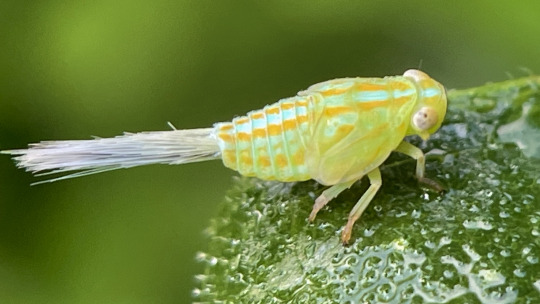
Aplos simplex, a member of the related family Issidae, also likes fig sap. its “tail” is actually a tuft of waxy secretions, which get shed along with the bright colors when it assumes a lumpy, bean-shaped adult form.
cicadellids, or leafhoppers, are just about everywhere on plants, but can be hard to approach without scaring them.
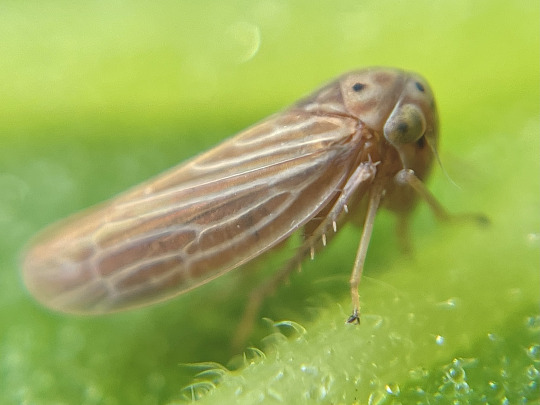
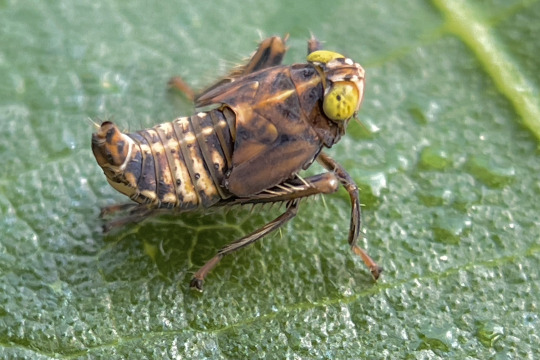
Agallia constricta on the left is a tiny species that feeds on grass, but many were scared up onto the fig by my footsteps. Jikradia olitoria is a much larger species that does feed on the fig; juveniles like this are curled, creeping goblins while adults’ rounded wings give them a pill-shaped appearance.

this big, pale leafhopper belongs to genus Gyponana. it’s tricky to get to species ID with these.
Graphocephala are striking little hoppers that eat a variety of native and nonnative plants. G. coccinea is the larger, more boldly colored one and G. versuta is smaller but more common locally. they’ll sit on the tops of leaves but take flight if you get too close quickly.

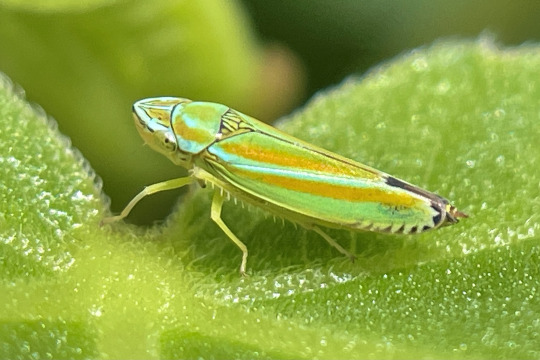
another group you’re almost guaranteed to encounter are flies (Diptera). these are a very diverse group, so much more than houseflies and mosquitoes (though I did run into both)
where I live, any plant with broad leaves is almost guaranteed to have a few Condylostylus, long-legged flies that come in shades of blue, green, and red. despite their dainty physique, they’re agile predators, typically feeding on other small flies.
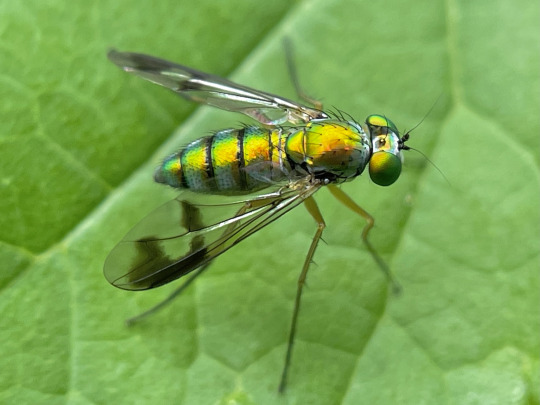
next, a few hoverflies: the ubiquitous Toxomerus geminatus and a Eumerus that I’ve been seeing a lot of this year (but maybe I’ve just noticed them for the first time). syrphids have varied life histories, but most adults drink nectar and many of the larvae are predaceous on aphids.
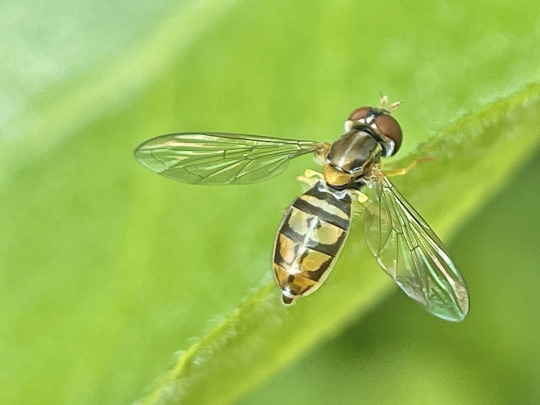
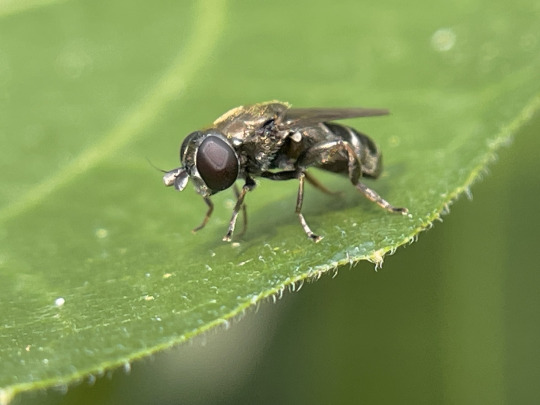
the metallic green soldier fly is Microchrysa flaviventris, nonnative here. Coenosia is a fun example of a “fly that looks like a fly,” with big red eyes and a gray body, and you might think they’re just another dung-sucking pest, but they’re actually aggressive predators! this one seemed to have nabbed itself some sort of nematoceran fly, maybe a fungus gnat.
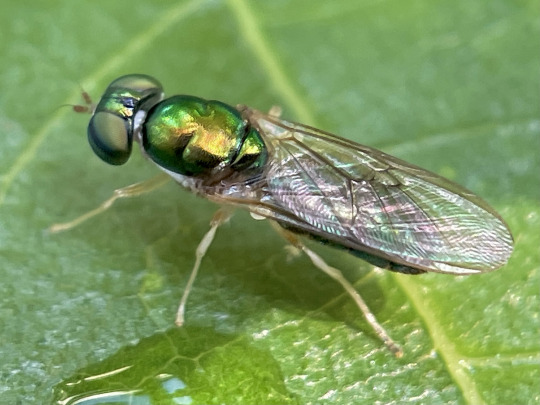
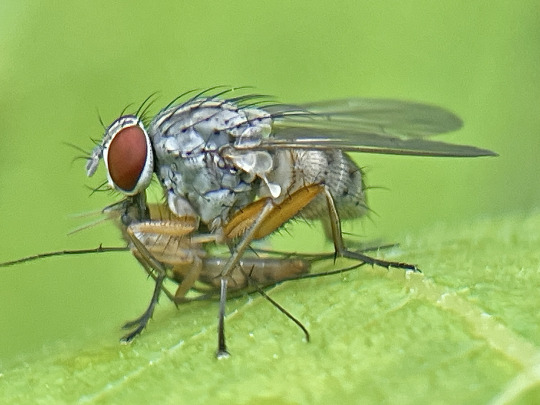
many flies are very tiny, just millimeters long. the first two little fellows are lauxaniids, while the last one, an agromyzid leafminer Cerodontha dorsalis, burrows through grass leaves as a larva.
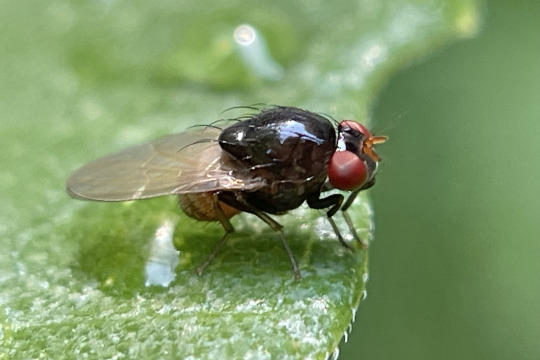
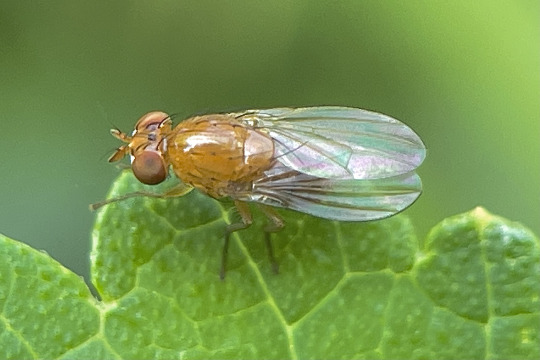
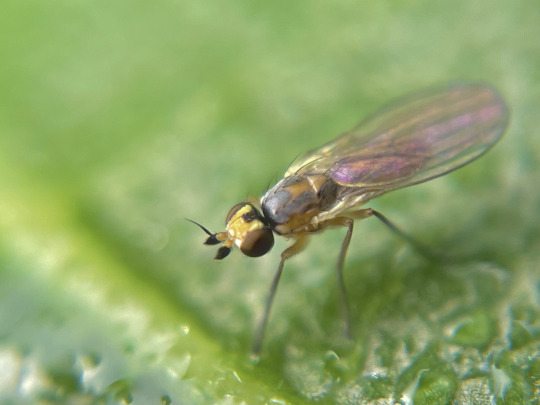
while moths and butterflies (Lepidoptera) are drawn to plants for their flowers or to lay eggs, many small moths can easily be found resting on or under leaves during the day.
these first two are tortricids, many of which are flat, rectangular moths resembling chips of bark or dead leaves. the apple bud moth, Platynota idaeusalis, feeds on a wide variety of hosts, while this beat-up old Argyrotaenia pinatubana would have developed in an edible tube nest of pine needles.

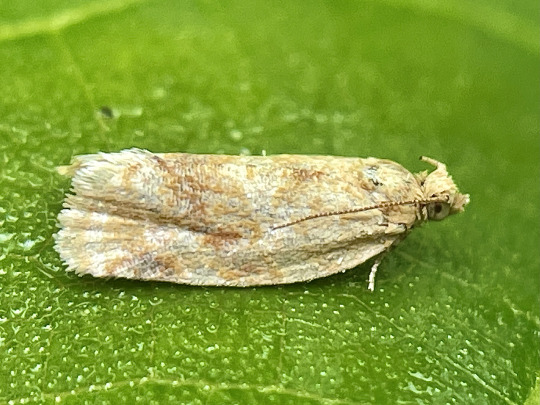
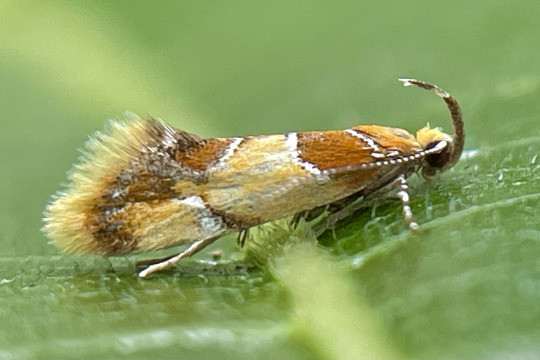

Callima argenticinctella feeds in bark and dead wood (a resource used by more caterpillars than you’d realize!) while the last moth, possibly an Aspilanta, is a leafminer.
although beetles (Coleoptera) are famous for their diversity, I didn’t find too many on the fig. the invasive Oriental beetle Exomala orientalis resting here can be found in a wide range of colors, from this common tan to to deep iridescent black. the other beetle is a Photinus pyralis firefly, sleeping under leaves as fireflies do.
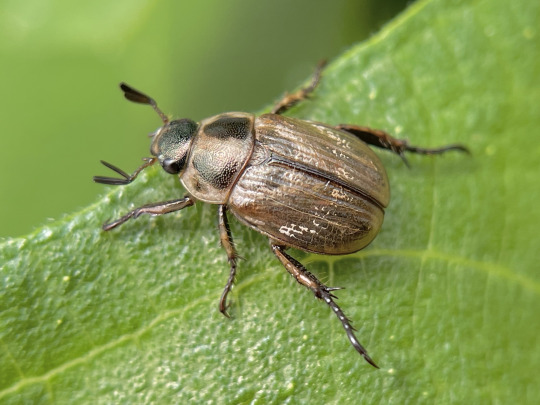
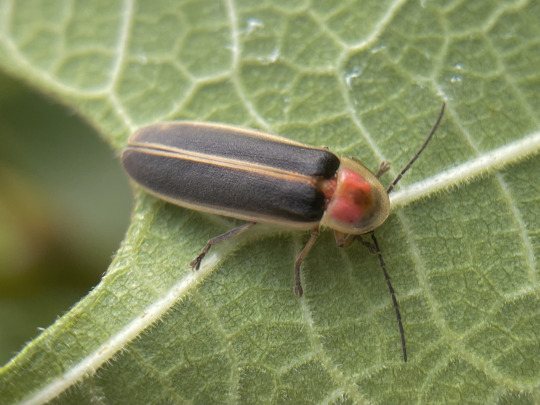
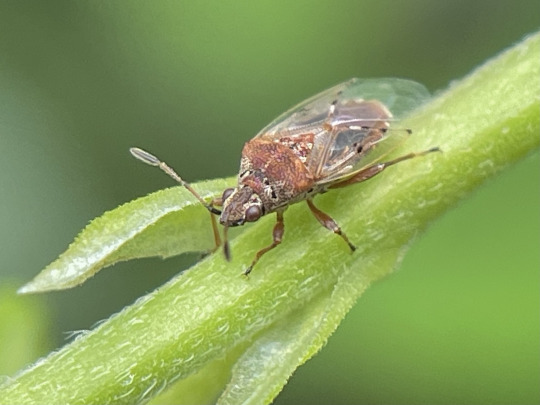
a few spare hemipterans: a Kleidocerys resedae that blew in on a wind, and below, the mulberry whitefly Tetraleurodes mori feeds on its namesake host. as for Hymenoptera, I saw manny tiny parasitic braconid wasps and various ants attracted to the planthoppers’ honeydew excretions—always worth checking underneath roosting hoppers for things having a drink.

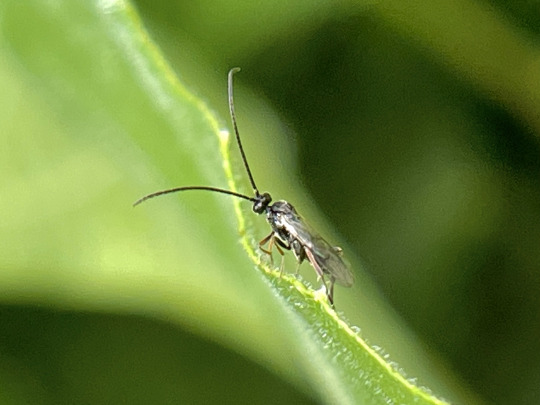
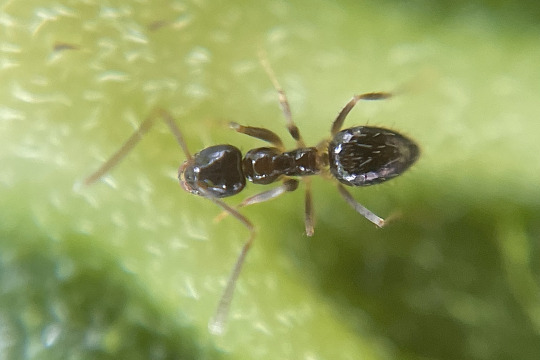
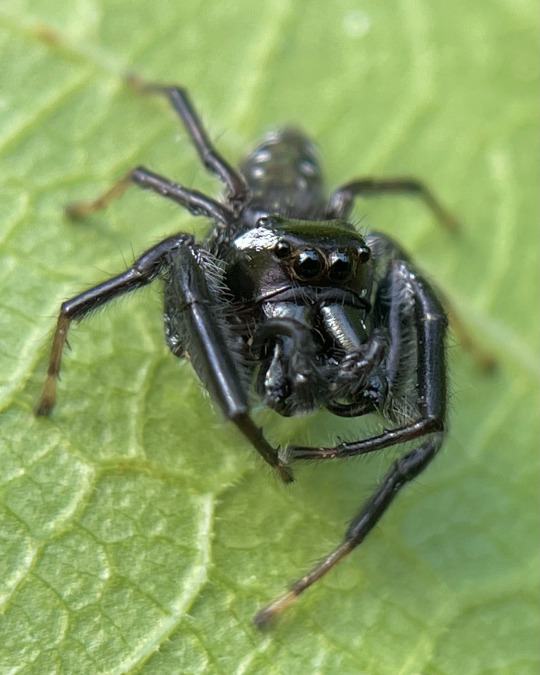
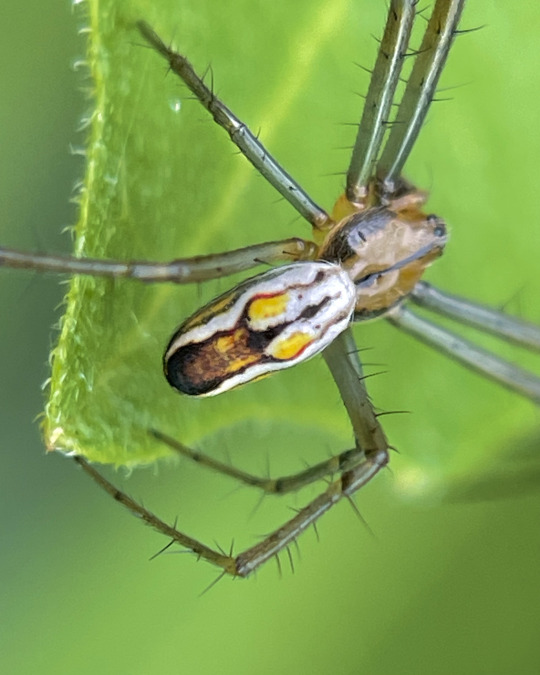
a couple handsome spider boys were scrambling through the fig seeking females, a jumping spider Paraphidippus aurantius and an orbweaver, Mecynogea lemniscata.
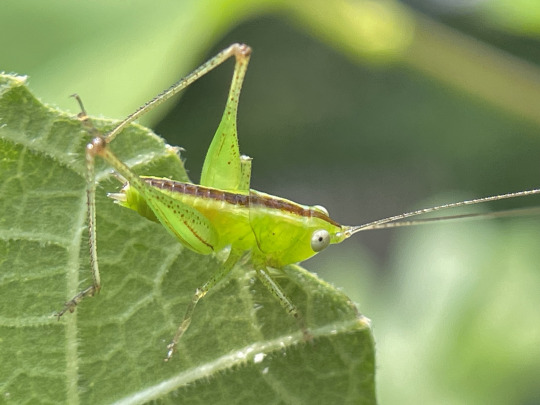
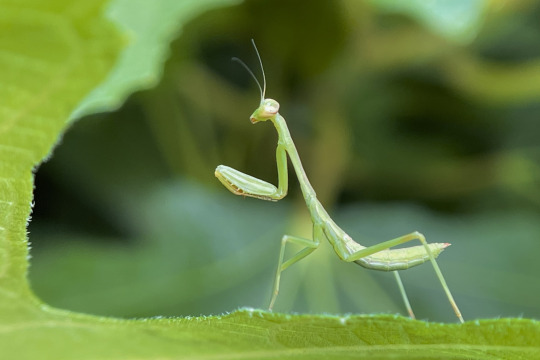
and to round it off, a young Conocephalus meadow katydid and a Carolina mantis, Stagmomantis carolina.
there’s 31 species of arthropod in this post, and I probably saw some 45, not all of which stayed for photos. if you walk slowly and look closely, you can see a sizeable chunk of your local biodiversity in under fifteen minutes! of course this will depend on where you live and what time of year it is, but there’s almost always more cool bugs out there than you’d expect, even on just a single plant.
1K notes
·
View notes
Text
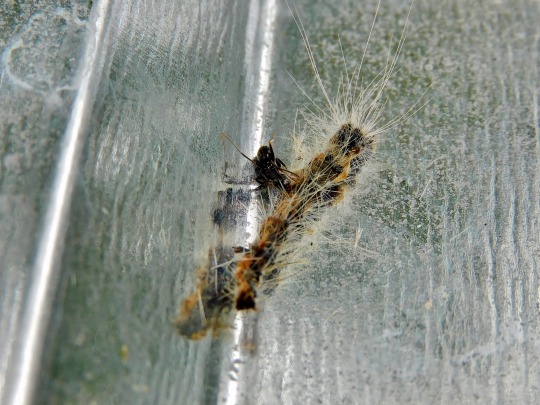

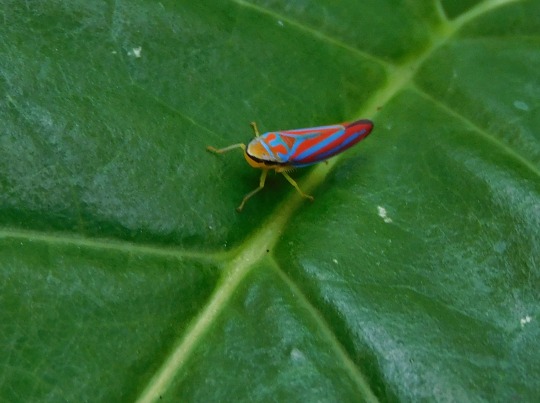
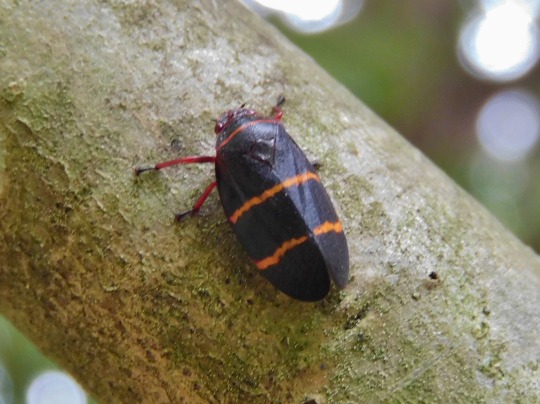

A few Insecty/Buggy pics from the day...
A Black Carpenter Ant (probably: Camponotus pennsylvanicus) dragging off a long dead Fall Webworm (Hyphantria cunea).
Likely a Banded Tussock Moth caterpillar (Halysidota tessellaris).
Candy-Striped Leafhopper (Graphocephala coccinea).
And 2- Two-Lined Spittlebugs (Prosapia bicincta).
#nature#my photography#insects#caterpillars#tussock moth#nature photography#spittlebugs#leafhopper#backyard nature#wildlife photography#bugs
47 notes
·
View notes
Text

with my hair and my clothes i feel like this leafhopper (red banded leafhopper, graphocephala coccinea)
8 notes
·
View notes
Text





















Zuzu's Bug-ventures: Jersey Shore Edition Part 2!
I'm back from New Jersey and in total I ended up finding 43 different kinds of insects/spiders/isopods/etc. Not all of them are getting posted (some of the photos I took are so dogshit I can't in good conscience consider them internet-worthy.) But here is part 1 if you haven't seen it.
Anyway, there are a couple repeats from part 1, having found and taken better pictures of some of these bugs in the latter half of my vacation.
Restless bush cricket (Hapithus agitator). A repeat, but a much better photo. They mfers are SO NOISY. Also I spent an entire evening trying to get good photos of like 5 different spiders with my camera's terrible flash, none of which came out well. But this guy gets a perfect nighttime photo, apparently
Spotted orbweaver spider (Neoscona crucifera). Also a repeat. I ended up seeing about a dozen of these guys all over the boardwalk
Arabesque orbweaver spider (Neoscona arabesca). Another orbweaver, but different from the previous one. I really love the webs in these photos
Bellflower resin bee (Megachile campanulae). Cute
Cabbage white butterfly (Pieris rapae). We're old friends at this point, though this one doesn't look as cabbage-like as others I've found
Flea jumping spider (Naphrys pulex). I was sitting in a gazebo near the ocean and saw this fella walking around. Apparently I'm getting really good at seeing bugs and spiders now, because this one was tiny and very well camouflaged
Unsure of ID. Possibly Helcystogramma badia.
Common pill-bug (Armadillidium vulgare). My isopod bestie who I saved from the windowsill <3
White-jawed jumping spider (Hentzia mitrata). Another repeat. It would be nice to get an actually good picture of this one someday
Swamp cicada (Neotibicen tibicen). Flew directly into my mom while we were playing mini-golf. Twice
South American toothed hacklemesh weaver spider (Metaltella simoni). Very dead, unfortunately. Also found this one during mini-golf. The internet says they like to be underneath things in damp places. So the fact that it was in the middle of the course with the sun beating down on it should have been my first clue. Also it is squished and curled up as hell :(
Praying mantis (Mantis religiosa) and a guest appearance by Canis familiaris, AKA my son Linus who has every disease. Including cataracts, so it's unclear if he could actually see the mantis
Unsure of ID. Probably a leafhopper of some kind
Unsure of ID. It's an orbweaver for sure
Columbian trig cricket (Cyrtoxipha columbiana). This was a really cool find tbh, even though they are definitrly known to be in New Jersey
Unsure of ID. Absolutely no idea. A soldier fly or a flat-headed wasp or a sweat bee or something else entirely??? I'm thinking of posting it on reddit at some point
Red-banded leafhopper (Graphocephala coccinea). Leafhopper colorations are super rad!
Yellow fever mosquito (Aedes aegypti). Aaaaand here we have some brand new trigger warnings for my bug posts! A disease-carrying mosquito that has absolutely and very clearly fed on someone. I saw it moving on the ground and thought it was a tiny beetle. Boy was I wrong. 0/10 do not recommend
Unsure of ID, probably a sweat bee. I think it's covered in pollen from that flower, which is honestly adorable. Also my phone's ability to take nice photos is so arbitrary
Triangulate cobweb spider (Steatoda triangulosa). My shower buddy. Took showers on two separate occasions and found this guy chilling near the sliding door. It was definitely alive and didn't seem to be getting wet, so I let it do its thing
Unsure of ID. Picture is shit so no clue at all. Probably died while hanging from the ceiling
There you have it! I regret not being able to capture a photo of an elusive giant solid neon yellow butterfly I saw all over town for days. But it wouldn't stop flying for even a second ;n;
Next time, I guess it's back to local stuff, backlog, and friends' photos! Weather looks pretty nice for the next week, so hopefully I can spend some time outside finding bug friends before it gets too cold
#Zuzu's bug ventures#dead bugs#insects#tw insects#spiders#tw spiders#mosquitoes#tw mosquitoes#blood#tw blood#insect identification
3 notes
·
View notes
Text
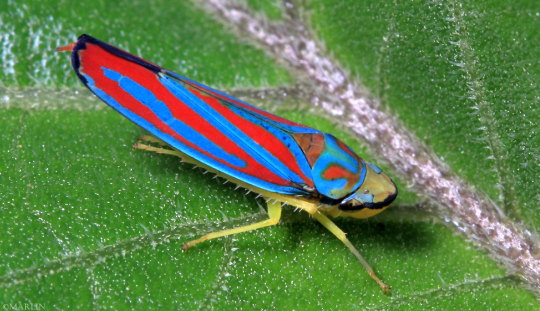
Red-banded Leafhopper – Graphocephala coccinea Photographed at DuPage County, Illinois. Size: 8.5mm
2 notes
·
View notes
Text

Planthopper (Graphocephala coccinea)
Aug 30 2022
What a beauty! Always love bumping into a cool bug unexpectedly. This one was chilling on a wild rose bush.
Native
2 notes
·
View notes
Text


Graphocephala coccinea, Meconema thalassinum
3 notes
·
View notes
Text


very green candy striped leafhopper (Graphocephala coccinea)
1 note
·
View note
Text


Found some friends!
1. Red striped leaf hopper (Graphocephala coccinea)
2. Bicolored striped sweat bee (Agapostemon virescens)
0 notes
Text
That looks a lot like a Graphocephala coccinea nymph. They are absolutely beautiful as adults:

Source


This little yellow bug has red, axolotl-like markings on its sides... What is it?
13 notes
·
View notes
Text



A Candy-Striped Leafhopper (Graphocephala coccinea), aka Red-Banded Leafhopper, on a Magnolia Leaf...
#nature#my photography#candy striped leafhopper#nature photography#leafhopper#wildlife photography#insect#backyard nature
16 notes
·
View notes
Text
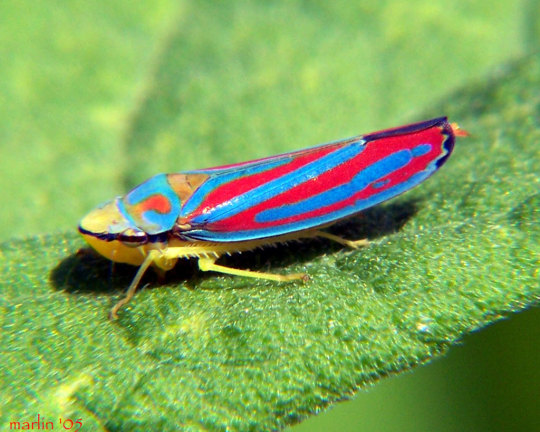
Red-banded Leafhopper (Graphocephala coccinea)
#Red-banded Leafhopper#Graphocephala coccinea#Upl#Insects#grasshopper#Leafhopper#Colorful Leafhopper
458 notes
·
View notes
